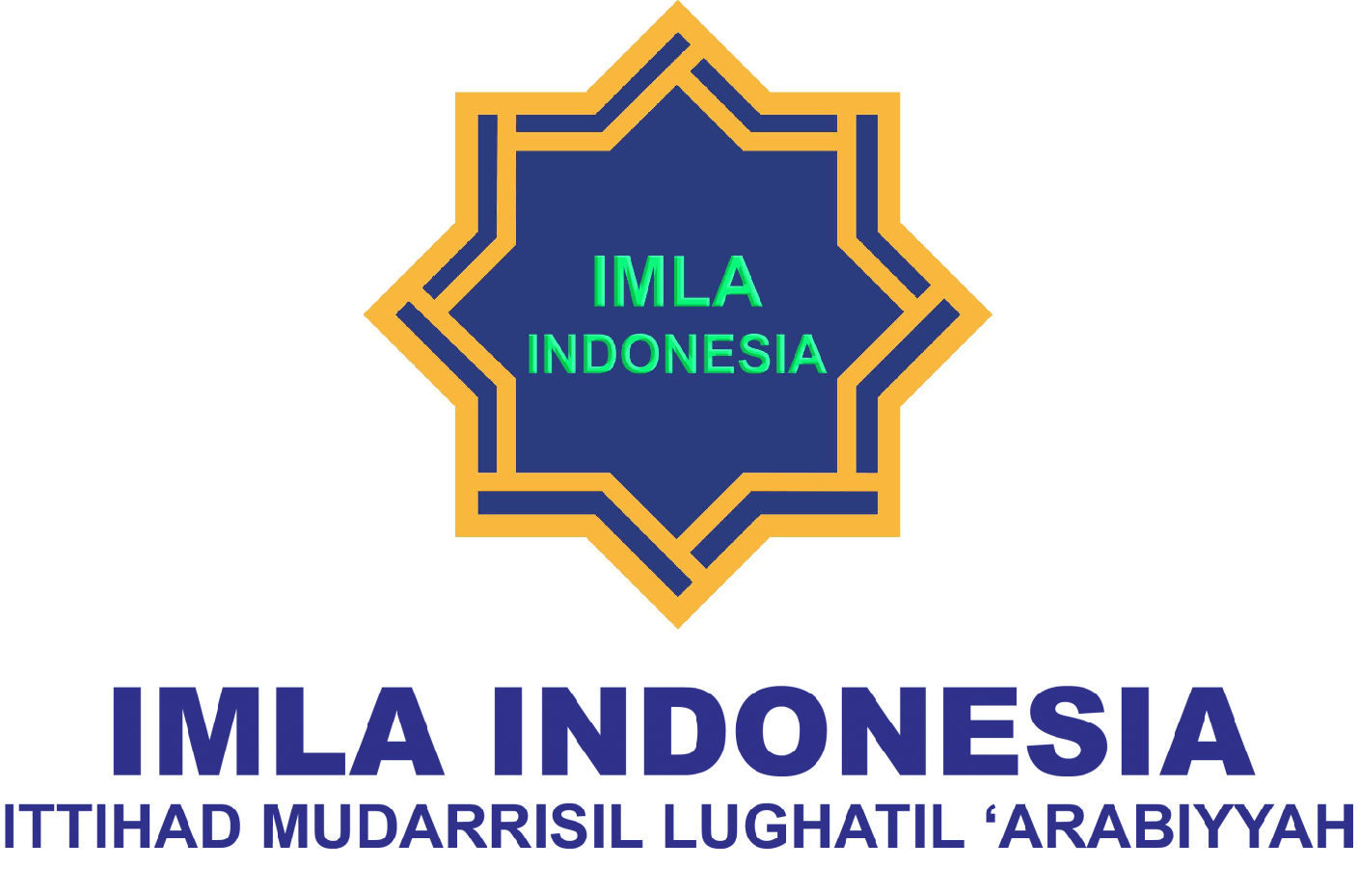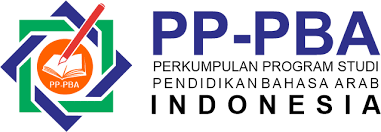Why Learning Arabic? (Maqasid Approach in Formulating Arabic Learning Curriculum)
DOI:
https://doi.org/10.30983/huruf.v3i1.6289Keywords:
Learning Arabic, Maqasid Approach, Arabic CurriculumAbstract
This study aims to carry out a Maqasid approach to learning Arabic. This study uses a qualitative approach with a descriptive analysis method. Researchers use the book Al Maqasid for Beginners by Jaser 'Audah as a primary source and studies of books, articles, journals, and related scientific works as a secondary source. Researchers will discuss three main aspects of learning Arabic: á¸aruriyyat, ḥajiyyat, and tahsiniyyat aspects. The results of this study: 1) In the á¸aruriyyat aspect, the things that need to be considered are the meaning of the concepts of Al-Ilah, Ar-Rab, Ad-Din, Ar-Rasul, Al-Ibadah, and At-Taqwa, then proceed to the related understanding haá¸arah, thaqafah, umran, and tamaddun as part of Islamic civilization, 2) in the ḥajiyyat aspect, two main points need to be considered, namely the sense of the moment and social media as a weapon. These two points result from ‘hajah’ or the need for students as objects of education in the context of current developments, 3) the tahsiniyyat aspect of the purpose of learning Arabic can be implemented in learning Arabic in the interest of getting benefits, both material and political benefits. By exploring and interpreting these three aspects of the maqasid perspective, students can understand their purpose for studying Arabic properly.
تهد٠هذه الدراسة إلى تنÙيذ منهج مقاصد لتعلم اللغة العربية. تستخدم هذه الدراسة المنهج النوعي مع طريقة التØليل الوصÙÙŠ. يستخدم الباØثون كتاب المقاصد للمبتدئين لجاسر عودة كمصدر أساسي ودراسات الكتب والمقالات والمجلات والأعمال العلمية ذات الصلة كمصدر ثانوي. سيناقش الباØثون ثلاثة جوانب رئيسية لتعلم اللغة العربية: جوانب الصرريات والØجيات والتØسينيات. ونتائج هذه الدراسة: 1) من ناØية السريات ØŒ Ùإن الأمور التي يجب مراعاتها هي معنى Ù…Ùاهيم الإله والرب والدين والرسول والعبادة والعبادة. التقوى ØŒ ثم انتقل إلى الÙهم ذي الصلة الØارة ØŒ والثقاÙØ© ØŒ والعمران ØŒ والتمدن كجزء من الØضارة الإسلامية، 2) ÙÙŠ الجانب الØجيات ØŒ هناك نقطتان أساسيتان يجب أخذهما ÙÙŠ الاعتبار ØŒ وهما الشعور باللØظة ووسائل التواصل الاجتماعي كسلاØ. هاتان النقطتان ناتجتان عن "الØاجة" أو الØاجة إلى الطلاب كأدوات تعليمية ÙÙŠ سياق التطورات الØالية، 3) يمكن تنÙيذ جانب التØسينيات لغرض تعلم اللغة العربية ÙÙŠ تعلم اللغة العربية من أجل الØصول على الÙوائد ØŒ كلاهما مادتين. والمناÙع السياسية. من خلال استكشا٠وتÙسير هذه الجوانب الثلاثة من منظور المقاصد ØŒ يمكن للطلاب Ùهم الغرض من دراسة اللغة العربية بشكل صØÙŠØ.
References
’Audah, Jaser, Al-Maqasid Untuk Pemula, ed. by Mohammad Affan (Yogyakarta: SUKA Press, 2013)
Acikgence, Alparslan, ‘The Framework for a History of Islamic Philosophy’, Journal of The International Institute of Islamic Thought and Civilization, 1.1 (1996), 1
Al-Attas, Muhammad Naquib, Aims and Objectives of Islamic Education (London: Hodder and Stroughton, 1979)
———, Islam: The Concept of Religion and the Foundation of Ethics and Morality (Kuala Lumpur: Dewan Bahasa dan Pustaka Malaysia, 1992)
Al-Munjid Fii Al-Lughat (Beirut: Daar al-Masyriq, 1977)
Andriani, Asna, ‘Urgensi Pembelajaran Bahasa Arab Dalam Pendidikan Islam’, Ta’allum, 03.01 (2015), 39
———, ‘Urgensi Pembelajaran Bahasa Arab Dalam Pendidikan Islam’, Ta’allum, 3.1 (2015), 50
Anis, Ibrahim, Fi Al-Lahajat Al-Arabiyah (Mesir: Maktabah al-Anjlu, 1965)
Arsyad, Azhar, Bahasa Arab Dan Metode Pengajarannya (Yogyakarta: Pustaka Pelajar, 2003)
Halstead, Mark, ‘An Islamic Concept of Education’, Comparative Education, 40 (2004), 517
Ibda, Hamidullah, ‘Urgensi Pemertahanan Bahasa Ibu Di Sekolah Dasar’, Shahih, 2.2 (2017), 197
Ibn Katsir, Al-Imam Abi Al-Fidaa Ismail, Tafsir Ibn Katsir (Dimsyqy: Daar al-Fikr)
Ibnu Khaldun, The Muqaddimah, An Introduction to History (UK: Princeton University Press, 1989)
Lane, E.W., Arabic English Lexicon (England: Cambridge, 1863)
Mohd Shahrizal, Nasir, and Sahrir Muhammad Sabri, ‘Tinjauan Makinuddin, Mohammad, ‘Perumusan Kompetensi Dan Tujuan Pembelajaran Bahasa Arab’, Miyah: Jurnal Studi Islam, 11.1 (2015), 1
Persepsi Pembelajaran Bahasa Arab Untuk Tujuan Ibadah Sebagai Satu Keperluan Bagi Masyarakat Muslim Awam Di Malaysia’, The Asia Pacific Journal of Educators and Education, 30.1 (2015), 51
Moneim, Aly Abdel, ‘Towards Islamic Maqasidi Education Philosophy for Sustainable Development: Quranic Perspective With Special Attention to Indonesia’, Millah: Jurnal Studi Agama, 17.2 (2018), 221
Mustapa, Cica R., ‘Urgensi Tujuan Pendidikan Dalam Praktik Pembelajaran Bahasa Arab’, Tadbir, Jurnal Manajemen Pendidikan Islam, 6.1 (2018), 69
Pinang, Husein, ‘Tafsir Tematik “Al-Ilaah†Dan “Al-Rabbâ€â€™, Ibn Abbas, 1.2 (2018), 112
Pusat Kurikulum: Balitbang Depdiknas, Pelaksanaan Kurikulum Berbasis Kompetensi (Jakarta, 2002)
Quthb, Sayyid, Fi Dzilal Al-Quran (Jakarta: Gema Insani, 2006)
Rosik, Fakhrur, ‘Ta’limu Al Mufrodat Li Annaatiqin Bihgairi Al Lughoh Al ‘arabiyyah, Nadhariyyan Wa Tathbiqan, Ponorogo’, Jurnal Lisanudhad, 01.02 (2014)
Shihab, M Quraish, Tafsir Al-Misbah, IX (Jakarta: Lentera Hati, 2007)
Wahida, Besse, ‘Kamus Bahasa Arab Sebagai Sumber Belajar (Kajian Terhadap Penggunaan Kamus Cetak Dan Kamus Digital)’, At-Turats, 11 (2017), 58
Wekke, Ismail Suardi, Model Pembelajaran Bahasa Arab, 1st edn (Yogyakarta: Deepublish, 2014)
Yunus, Fathy, Tasmim Manhaj Li Ta’lim Al-Lughah Al-Arabiyah Lil Al-Ajanib (Kairo: Dar al-Thaqafah, 1978)
Zaidan, Jurji, Tarikh Adab Al-Lughah Al-Arabiyyah (Al-Qahirah: Handawi, 2013)
Zarkasyi, Hamid Fahmy, ‘Tamaddun Sebagai Konsep Peradaban Islam’, Tsaqafah, 2.1 (2015), 1
Downloads
Published
Issue
Section
Citation Check
License
Copyright (c) 2023 Ahmad Zaki Annafiri

This work is licensed under a Creative Commons Attribution-ShareAlike 4.0 International License.
Authors who publish with this journal agree to the following terms:
- Authors retain copyright and grant the journal right of first publication with the work simultaneously licensed under a Creative Commons Attribution-ShareAlike 4.0 International Licensethat allows others to share the work with an acknowledgment of the work's authorship and initial publication in this journal.
- Authors are able to enter into separate, additional contractual arrangements for the non-exclusive distribution of the journal's published version of the work (e.g., post it to an institutional repository or publish it in a book), with an acknowledgment of its initial publication in this journal.
- Authors are permitted and encouraged to post their work online (e.g., in institutional repositories or on their website) prior to and during the submission process, as it can lead to productive exchanges, as well as earlier and greater citation of published work (See The Effect of Open Access).










